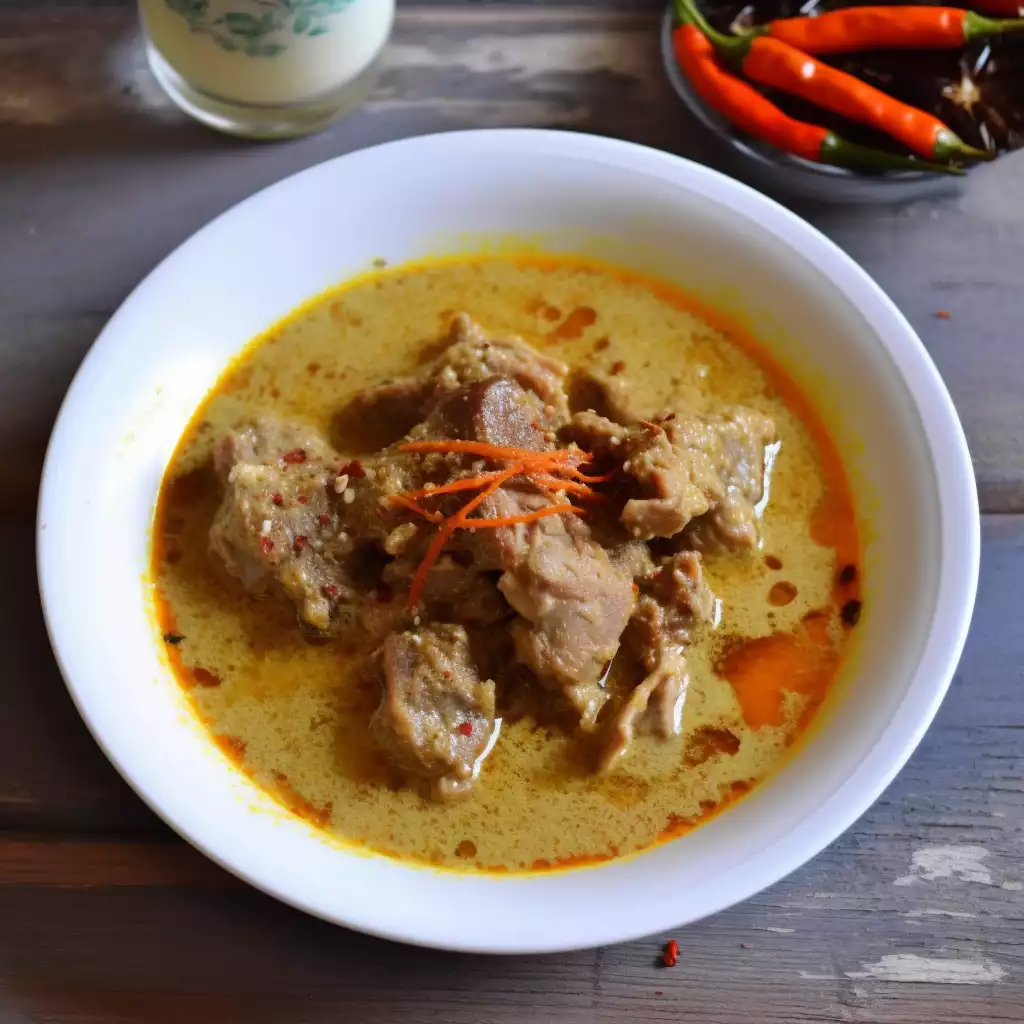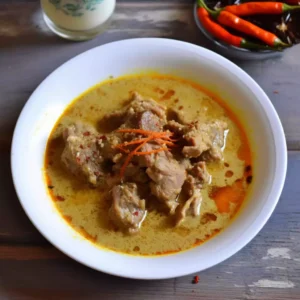
Delve into the aromatic world of Mutton Rezala, a dish brimming with rich flavors and cultural heritage. Originating from the royal kitchens of Bengal, this recipe has transcended generations, captivating palates with its exquisite taste and inviting aroma.
With its roots deeply embedded in Mughlai cuisine, Mutton Rezala boasts a perfect balance of spices and textures, making it a delightful culinary experience for any occasion.
Crafted with tender mutton pieces marinated in a medley of spices, the dish is elevated by the creamy Rezala paste, featuring a blend of cashews, yogurt, and aromatic spices.
Slow-cooked to perfection, the succulent mutton absorbs the flavors, resulting in a dish that is both comforting and indulgent. Despite its regal origins, Mutton Rezala embraces simplicity in its preparation, inviting home cooks to embark on a flavorful journey steeped in tradition.
Whether you’re seeking to impress guests or simply craving a taste of culinary history, Mutton Rezala promises to delight your senses and transport you to the vibrant streets of Bengal. Embark on this culinary adventure and savor the irresistible flavors of this timeless dish.
Expert Tip: For a thicker gravy, simmer the Mutton Rezala uncovered for the last few minutes of cooking to allow the excess moisture to evaporate.
Mutton: Tender chunks of mutton provide rich flavor and succulent texture to the dish.
Salt, Ginger Paste, Garlic Paste, Turmeric, Chili Powder: These spices form the marinade, infusing the mutton with warmth and depth of flavor.
Onion, Cashews, Yoghurt, Poppy Seeds, Desiccated Coconut: Essential components of the Rezala paste, these ingredients contribute to the creamy consistency and aromatic profile of the dish.
White Pepper, Cardamom Pods, Cloves, Cinnamon: Aromatic spices that lend complexity and depth to the Rezala paste, enhancing its flavor profile.
Oil, Bay Leaf, Green Chillies, Water, Double Cream, Coriander: Additional ingredients used in cooking and garnishing, adding layers of flavor and texture to the final dish.
Expert Tip: Adjust the spiciness of the dish by varying the quantity of green chilies according to your preference.
Expert Tip: For a richer flavor, toast the whole spices before grinding them for the Rezala paste.
Marinate the mutton for at least 2 hours in the refrigerator to allow the flavors to permeate the meat thoroughly.
While the traditional recipe calls for specific spices, feel free to adjust the seasoning according to your preferences. Experiment with different spices to tailor the dish to your taste.
Double cream adds richness and creaminess to the dish, but you can substitute it with heavy cream or full-fat yogurt for a lighter version of Mutton Rezala.
The mutton is cooked when it becomes fork-tender and easily pulls apart. Simmering it on low heat for about an hour ensures that the meat becomes tender and absorbs the flavors of the gravy.
Yes, Mutton Rezala tastes even better when allowed to sit for a few hours or overnight, allowing the flavors to meld together. Simply reheat gently before serving.
Here are some more recipes for you to enjoy! If you my recipes don’t forget to rate and leave a comment.
If you have any recipe suggestions, please do not hesitate to ask me. A great way to stay in contact with me is through Instagram, Facebook, Twitter and YouTube. Don’t forget to tag me @CookwithNabeela in your recipe photos!

Subscribe now to receive my latest recipes directly in your inbox. Stay up-to-date and never miss out!

I love to cook! I want to share with you my favourite, delicious family-friendly recipes. I want to inspire you to create fantastic food for your family every day.
Add your first comment to this post